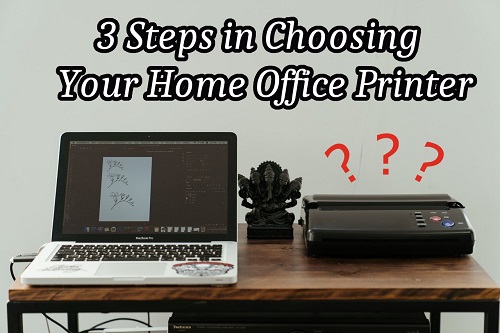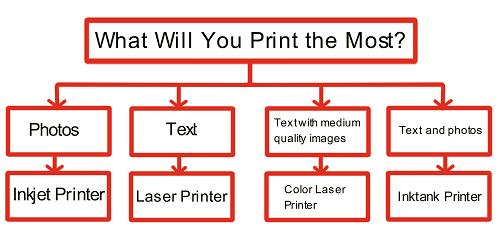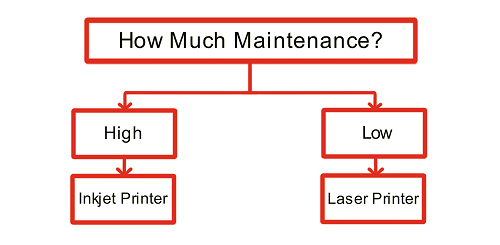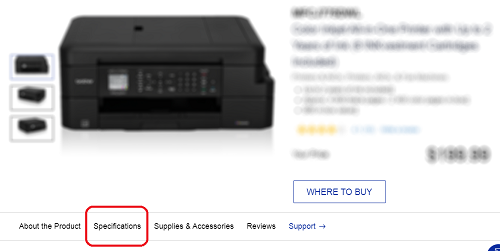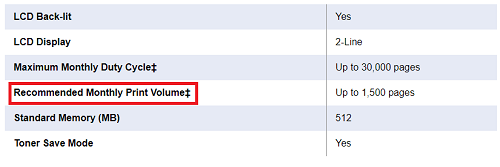3 Steps in Choosing Your Home Office Printer
| Aug 31, 2020A printer is not something that one can afford having Buyer’s Regret.
One can end up as the star of the saying, “A fool and his money are soon parted.”
If you’re planning to have a home office printer, you may be intimidated by the plethora of details that you’ll have to consider. So here’s a guide to let you know what would be the best printer to fit your needs.
Laser Printer vs Inkjet Printer
The difference between the laser printer and an inkjet printer are their mechanisms and what they print with.
Laser printers melt toner powder into print. Inkjet printers spray ink to print.
How Do Laser Printers Work?
Laser printers negatively charge a light-sensitive drum or OPC drum. Then a positively charged laser would form the image on the drum. The toner powder would be attracted to the positive charge.A paper would be rolled into the drum where the toner would be attracted to its surface.
If the laser printer is a color printer, the paper would go through each drum for black, cyan, magenta and yellow.
In the end, the toner would be heated and fused into the paper.
How Do Inkjet Printers Work?
In inkjet printers, ink is sprayed out of the printhead and into the paper.
There are two types of inkjet printers:
Thermal inkjet printers heat the ink of their ink cartridge. This evaporates some of the ink into vapor. With the increased gas pressure inside the ink reservoir, ink is pushed out of the nozzles. Most Canon and HP printers are thermal inkjet printers.
Piezo-electric Inkjet Printers don’t use heat. Instead it applies electric currents to a quartz which contracts and relaxes to let ink out. Most Epson printers are piezo-electri inkjet printers.
Piezo-electric printers have precise droplet size and can use a wide variety of ink due to non-heating. Such as dye-based ink, UV ink, food dye ink and pigment-based ink. But the more printheads it has, the pricier the printer.
Thermal printers are less expensive. Although its droplet size is limited because of the heat and requires more maintenance.
To determine which printer is a perfect fit for you, simply answer the following questions:
Step 1: Answer these Questions
Text vs Image : What Will You Print the Most?
If you plan to print mostly documents, it will not need photo quality to be professional. A laser printer will do.
Laser printers print faster than inkjet printers. This is because a laser printer prints by “image” in the page while inkjet printers print by line.
Inkjet printers are also designed to print slower to allow ink to dry and prevent streaking. Inkjet printers use a lot of ink for greater print quality. The more dots per inch, the greater is the image’s blending, depth and resolution. Its ink has softer gradients than toner. This makes inkjet printers are best for photo printing.
If you need to print text with images such as office documents, a color laser printer will do. But if you plan to print both text and photos, then you may need an inktank printer to have a more long-lasting ink supply.
High or Low: How Much Maintenance Can You Do?
This can also be the question, “How often will you use your printer?”
Inkjet Printer Maintenance
Inkjet printers require a lot more maintenance than laser printers. This is because its printhead’s microscopic nozzles are prone to clogging if ink dries in it. On an average, the lifespan of an inkjet printer is 4 years.
Here is the required maintenance of inkjet printers:
- Daily
An inkjet printer must be plugged daily in a wall socket. This is to keep the semiconductive printhead warm and to keep its ink remnants melted a little longer.
- Weekly
An inkjet printer must print 1 to 2 times a week to prevent ink clogging. If one doesn’t always print often, printing a test page will do. If the printer stays unplugged and not used for a long time, it will initiate a cleaning cycle.
A cleaning cycle uses up a lot of ink to push out the clogs from the nozzles which could’ve been used for printing.
- Monthly
If the print quality is starting to show streaking or white lines, then it is time to print a test page to confirm and then initiate a cleaning cycle.
Laser Printer Maintenance
For laser printers, they don’t require much maintenance since it uses toner powder instead of liquid ink. The laser printer has an average lifespan of 5 years.
Step 2: Look at the Specs of Your Chosen Type of Home Office Printer
Now that you have chosen a type of printer. You’ll have to dive into their Specs or Specifications. Specs is a common term for all printer brands.
When clicking Specifications, here are what to look for to suit your printing needs even better:
Recommended Monthly Print Volume
How many pages are you going to print per month?
Are you a low print volume user of 100 pages per month?
A medium print volume user of 300 pages a month?
Or a high print volume user of 700 pages a month or more?
Whatever is your estimated monthly print volume, you’ll need to make sure that it’s under the printer’s Recommended Monthly Print Volume. This way, you won’t be wearing down your printer early.
Ink Included
Some printer models will have them, some won’t. On the Brother website, they call it What’s Included. On Epson, HP and Canon, you can see it in What’s in The Box.
The higher the Inbox Yield, the higher the printer’s initial cost. But it will save you money in buying ink cartridges again and again.
Cartridge’s Cost per Page
Cartridges affect the printer’s long-time expense. To know how much a cartridge would cost per page, simply divide the price of the cartridge by its page yield.
For example, HP 65XL is priced $35.99 with a page yield of 300 pages. The cartridge then costs $0.12 per page.
A compatible HP 65XL cartridge is priced $21.99 with the same page yield. The compatible cartridge then costs $0.07 per page.
Step 3: Determine Your Home Printer’s Cost Consideration
Cost Consideration is the expected expense your home office printer will accumulate in its lifespan. Here is the formula:
Cost Consideration = {Total Cost per Page x [(Yearly Printload x Years of Ownership) — Inbox Yield]} + Printer Price
Total Cost per Page
Total Cost per Page is the sum of all the Cost per Page of the all the printer’s required cartridges.
If your printer is a monochrome printer, it would be the black cartridge only.
If your printer is a color printer, it would be the Cost per Page sum of its CMYK cartridges.
Yearly Printload
Yearly Printload is your monthly printload multiplied to 12 months.
If you have a low monthly print volume of 100 pages, that would be 1,200 pages of yearly printload.
If you have a medium monthly print volume of 300 pages, that would be 3,600 pages of yearly printload.
If you have a high monthly print volume of 700 pages, that would be 8,400 pages of yearly printload.
Years of Ownership
A laser printer has an average lifespan of 5 years.
An inkjet printer has an average lifespan of 4 years.
Inkjet Printer Cost Consideration Example
Supposed you’re a low print volume user with a yearly printload of 1,200 pages. You also are looking for an inkjet printer.
Brother MFCJ5845DW is a multifunction color inkjet printer that has a Recommended Monthly Print Volume of 2,000 pages.
Its Total Cost per Page is $0.025.
It has an Inbox Yield of 1,420 pages.
Its price is $249.99.
Using Cost Consideration formula:
A More Informed Buyer’s Decision for Home Office Printers
First, decide which is best for you: inkjet, laser, color laser or inktank.
Then upon choosing the type, look at different specs of that type of printer.
Once you have chosen different printer models, you can decide which one you choose by comparing their Cost Consideration.
We hope this helps in having a more informed buyer’s decision for home office printers.

